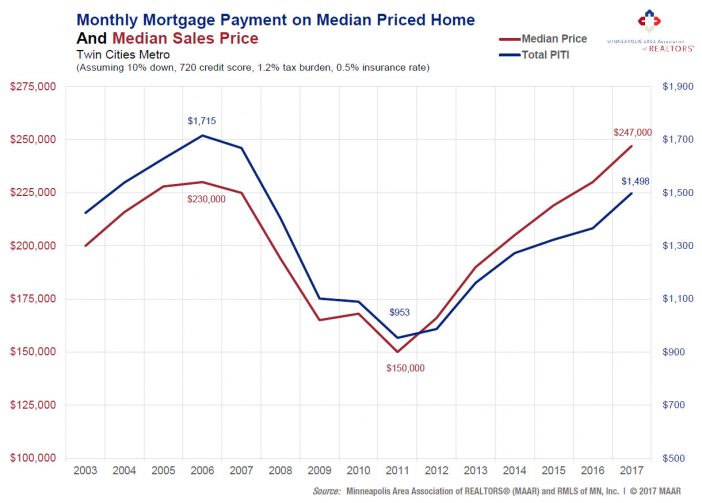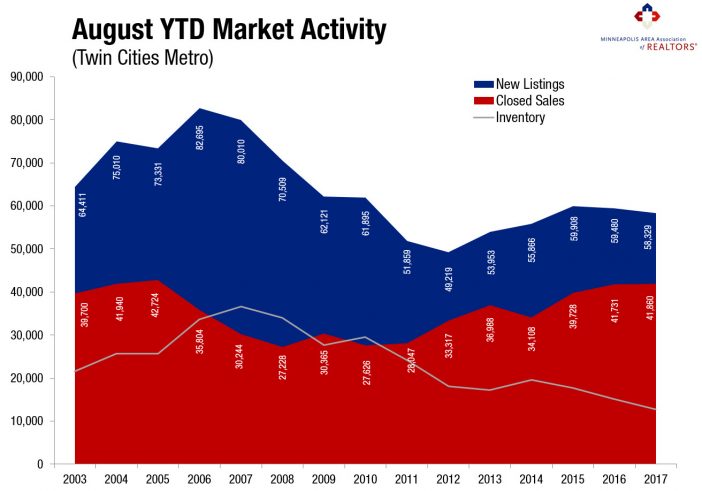
For Week Ending September 16, 2017
According to the National Association of Home Builders, there is a rising demand in the new-home market spurred on by ongoing job and economic growth, the continuation of attractive mortgage rates and increased consumer confidence. And there does appear to be a notable increase in building or announced building projects around the country. Builder confidence tends to equate with more construction starts, which would be welcome news in an era of low inventory.
In the Twin Cities region, for the week ending September 16:
- New Listings decreased 5.7% to 1,536
- Pending Sales decreased 7.1% to 1,084
- Inventory decreased 16.5% to 12,740
For the month of August:
- Median Sales Price increased 6.8% to $252,000
- Days on Market decreased 14.3% to 48
- Percent of Original List Price Received increased 0.6% to 98.5%
- Months Supply of Inventory decreased 16.7% to 2.5
All comparisons are to 2016
Click here for the full Weekly Market Activity Report. From The Skinny Blog.




